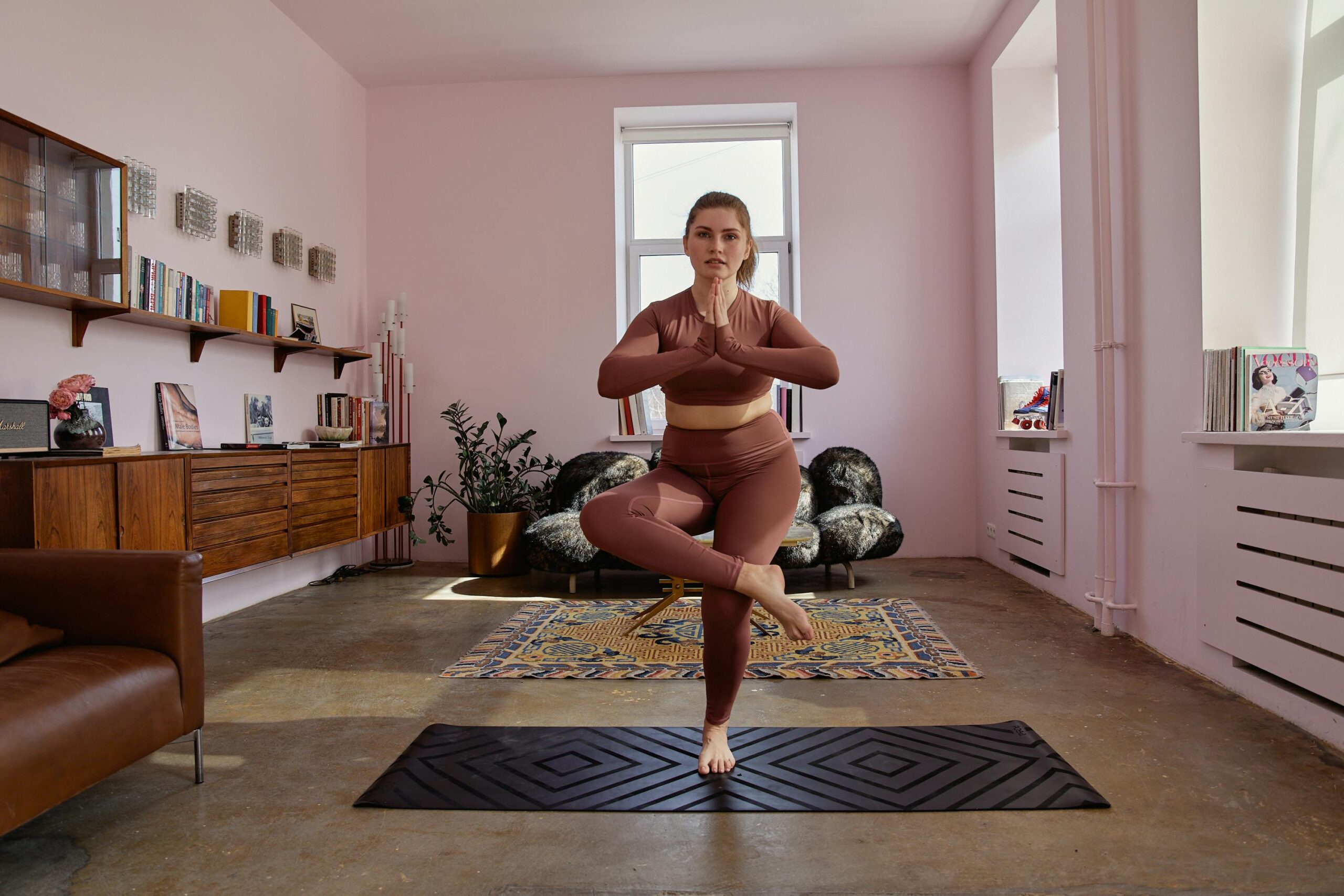Creating a balanced workout routine at home is essential for achieving fitness goals, maintaining overall health, and preventing injuries. A well-rounded program should include cardiovascular exercise, strength training, flexibility, and balance work. Here’s a guide to help you design an effective home workout routine:
1. Set Your Fitness Goals
- Identify Objectives: Determine whether you want to lose weight, build muscle, improve endurance, increase flexibility, or enhance overall fitness.
- Specific and Realistic Goals: Set specific, measurable, achievable, relevant, and time-bound (SMART) goals.
2. Choose Your Workout Space
- Dedicated Area: Find a space in your home that allows you to move freely and is free from distractions.
- Equipment: Ensure you have basic equipment like a yoga mat, resistance bands, dumbbells, and a stability ball. However, many exercises can be done with just your body weight.
3. Structure Your Weekly Routine
A balanced routine should include different types of exercises. Here’s a sample weekly schedule:
Day 1: Cardiovascular Exercise
- Duration: 30-45 minutes
- Exercises: Jump rope, running in place, high knees, burpees, dancing, or a cardio workout video.
Day 2: Strength Training (Upper Body)
- Duration: 30-40 minutes
- Exercises: Push-ups, tricep dips, bicep curls, shoulder presses, plank variations.
- Sets and Reps: 3 sets of 12-15 reps for each exercise.
Day 3: Flexibility and Balance
- Duration: 30 minutes
- Exercises: Yoga or Pilates session focusing on stretches and balance poses like tree pose and warrior III.
Day 4: Cardiovascular Exercise
- Duration: 30-45 minutes
- Exercises: Cycling, brisk walking, or a HIIT (High-Intensity Interval Training) session.
Day 5: Strength Training (Lower Body)
- Duration: 30-40 minutes
- Exercises: Squats, lunges, glute bridges, calf raises, deadlifts.
- Sets and Reps: 3 sets of 12-15 reps for each exercise.
Day 6: Core Strengthening
- Duration: 20-30 minutes
- Exercises: Plank, Russian twists, leg raises, bicycle crunches, mountain climbers.
- Sets and Reps: 3 sets of 15-20 reps for each exercise.
Day 7: Rest or Active Recovery
- Duration: 30 minutes (optional)
- Activities: Gentle yoga, stretching, or a light walk.
4. Warm-Up and Cool-Down
- Warm-Up: 5-10 minutes of light cardio (e.g., marching in place, arm circles) to increase heart rate and prepare muscles.
- Cool-Down: 5-10 minutes of stretching to relax muscles and improve flexibility.
5. Incorporate Variety
- Change It Up: Regularly vary your exercises to prevent boredom and plateauing. Try new workout videos, different exercise routines, or incorporate new equipment.
- Challenge Yourself: Gradually increase the intensity, duration, or resistance of your workouts to keep challenging your body.
6. Listen to Your Body
- Rest and Recovery: Allow your muscles time to recover, and avoid overtraining. Ensure you get adequate sleep and hydration.
- Modify as Needed: Adjust exercises if you experience pain or discomfort. Consult a fitness professional if you have any concerns or pre-existing conditions.
7. Stay Motivated
- Set Short-Term Goals: Break down your main goal into smaller, achievable milestones.
- Track Progress: Keep a workout journal or use a fitness app to monitor your progress and celebrate achievements.
- Find Support: Join online fitness communities, workout with a friend, or hire a virtual trainer for guidance and motivation.
Conclusion
Creating a balanced workout routine at home is both achievable and effective with proper planning and commitment. By combining cardiovascular exercise, strength training, flexibility, and balance work, you can enhance your fitness and overall health. Remember to start slowly, listen to your body, and stay consistent. Enjoy the journey to a healthier you!
